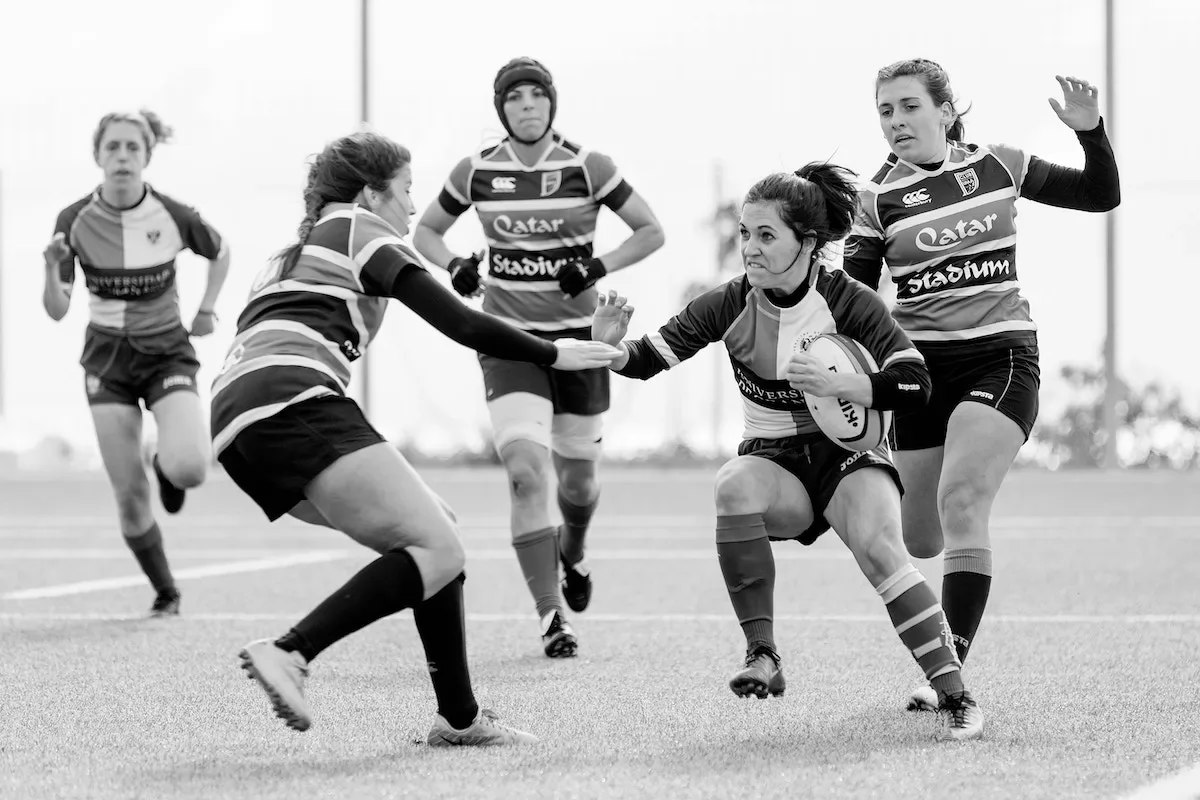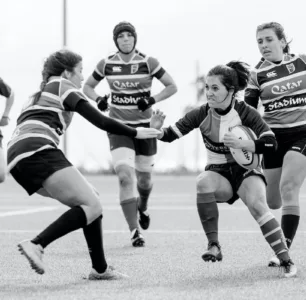Discover how mastering footwork in rugby can give you the winning edge on the field and enhance your overall performance.
Rugby, known for its physicality and high-impact collisions, requires a combination of strength, speed, agility, and technique. Among these crucial elements, footwork stands out as a fundamental skill that can make all the difference between success and failure on the rugby pitch. In this article, we will delve into the importance of footwork in rugby and explore seven essential skills that every player should master to elevate their game to new heights.
1. Speed and Agility
When it comes to rugby, speed and agility are paramount. The ability to accelerate quickly, change direction rapidly, and evade opponents is crucial for both offensive and defensive maneuvers. Footwork plays a pivotal role in achieving these attributes. By perfecting your footwork techniques, you can enhance your speed and agility, allowing you to react swiftly to changing game situations and leave your opponents grasping at thin air.
2. Evasion and Creativity
One of the most exhilarating aspects of rugby is the opportunity for players to showcase their evasive skills and creativity. A player with exceptional footwork can effortlessly sidestep opponents, create gaps in the defense, and launch devastating attacks. The art of evading tackles through quick foot movements requires precise timing, coordination, and balance. By practicing various footwork techniques, such as sidestepping, swerving, and stutter steps, players can become masters of evasion and ignite moments of brilliance on the field.
3. Acceleration and Deceleration
Rugby is a game of sudden bursts of speed, abrupt changes in direction, and instantaneous stops. Effective footwork allows players to accelerate rapidly to exploit gaps in the defense or chase down opponents, as well as decelerate swiftly to maintain balance and control in tight situations. The ability to control your footwork during these rapid transitions can significantly impact your performance on the field, enabling you to react instinctively and maintain momentum.
4. Balance and Stability
Maintaining balance and stability in rugby is vital, as it allows players to stay on their feet, absorb impacts, and continue the play. Proper footwork techniques, such as a wide base, bent knees, and a low center of gravity, promote stability and enable players to withstand physical challenges. By mastering these techniques, players can resist tackles, retain possession, and effectively distribute the ball, providing their team with a crucial advantage.
5. Precision and Control
In rugby, precision and control are the keys to success. Whether it’s passing, kicking, or executing intricate moves, footwork plays an integral role in ensuring accuracy and control. A well-executed pass or kick requires precise foot placement, weight transfer, and follow-through. By honing their footwork techniques, players can enhance their ability to deliver accurate passes, execute pinpoint kicks, and maintain control over the ball, giving their team the upper hand in critical moments.
6. Defensive Prowess
Footwork is not only essential for offensive maneuvers but also for defensive prowess. Effective footwork allows defenders to position themselves optimally, anticipate the attacking player’s movements, and make crucial tackles. By employing proper footwork techniques, such as lateral shuffling, quick changes in direction, and precise foot positioning, defenders can cut down attacking options, close gaps in the defense, and disrupt the opposition’s momentum.
7. Mental Agility and Decision-Making
The game of rugby is not solely about physical attributes but also about mental agility and decision-making. Quick thinking, adaptability, and astute decision-making are essential for players to seize opportunities and counteract the strategies of the opposition. Footwork plays a significant role in these cognitive aspects of the game, as it enables players to position themselves optimally, assess their surroundings, and react swiftly to game-changing situations. By mastering footwork skills, players can elevate their mental agility and decision-making capabilities, becoming invaluable assets to their team.
Drills to Improve Your Footwork for Rugby: Boosting Speed, Agility, and Precision
Enhance your footwork skills in rugby with these effective drills designed to improve speed, agility, and precision on the field.
Footwork is a fundamental aspect of rugby that can greatly impact your performance on the field. It plays a crucial role in accelerating, changing direction, evading opponents, and maintaining balance. By focusing on specific drills that target your footwork, you can enhance your speed, agility, and precision, giving you a competitive edge. In this article, we will explore a variety of drills that are designed to improve your footwork in rugby and elevate your overall game.
1. Ladder Agility Drills
Ladder agility drills are excellent for enhancing foot speed, coordination, and agility. Set up an agility ladder on the ground and perform various footwork patterns, such as high knees, lateral shuffles, quick steps, and diagonal movements. Focus on maintaining quick and precise foot placement while moving through the ladder at a high tempo. These drills not only improve footwork but also develop overall coordination and body control.
2. Cone Shuttle Runs
Cone shuttle runs are ideal for improving acceleration, deceleration, and change of direction. Set up four cones in a straight line, approximately five meters apart. Start at the first cone and sprint to the second cone, touch it, and then sprint back to the starting cone. Repeat this process, but this time sprint to the third cone and back, and then to the fourth cone and back. Focus on explosive bursts of speed and sharp changes in direction, utilizing quick and controlled footwork.
3. Sidestepping Drills
Sidestepping is a crucial skill for evading opponents and creating attacking opportunities. Set up two cones approximately two meters apart. Start at one cone and sidestep quickly to the other cone, maintaining a low center of gravity and sharp footwork. Repeat this drill, gradually increasing the speed and intensity. Focus on precise foot placement, quick weight transfer, and staying balanced throughout the movement. Incorporate sidestepping into various game-like scenarios to simulate real match situations.
4. Reactive Agility Drills
Reactive agility drills are designed to improve your ability to react quickly to unpredictable movements. Set up cones or markers in a random pattern on the ground. Start at the center of the markers and have a partner call out a specific marker for you to sprint to. React to the call and sprint to the designated marker, employing quick footwork and sharp changes in direction. This drill enhances your reaction time, decision-making, and footwork under pressure.
5. Box Jumps
Box jumps are an excellent plyometric exercise that develops explosive power, lower body strength, and footwork. Find a sturdy box or platform of a challenging height. Stand facing the box, and using a quick and explosive motion, jump onto the box, landing softly and quietly. Step down and repeat the jump, focusing on speed and precision. Gradually increase the height of the box as your strength and confidence improve. Box jumps simulate the explosive movements required in rugby and help improve footwork for jumping and leaping.
6. Mirror Drills
Mirror drills are effective for improving coordination, balance, and footwork accuracy. Pair up with a teammate and face each other. One player leads the drill by performing various footwork movements while the other player mirrors their movements. The goal is to match the lead player’s footwork precisely, maintaining the same speed and timing. Switch roles periodically to give both players the opportunity to lead and mirror. This drill develops synchronization, agility, and the ability to adapt quickly to an opponent’s movements.
7. Cone Weave Drill
The cone weave drill focuses on improving agility, quickness, and lateral movement. Set up five or more cones in a straight line with about one meter of space between them. Starting at one end, weave in and out of the cones as quickly as possible, maintaining quick footwork and controlled changes in direction. Focus on staying low, keeping a wide base, and maintaining balance throughout the drill. Increase the speed and intensity as you become more comfortable with the movement.
Conclusion
Improving your footwork in rugby is essential for excelling in the game. By incorporating these drills into your training routine, you can enhance your speed, agility, and precision on the field. Remember to focus on proper technique, quick foot placement, and maintaining balance throughout each drill. Regular practice and dedication to improving your footwork will pay dividends in your overall performance, allowing you to outmaneuver opponents, evade tackles, and make impactful contributions to your team’s success. So, lace up your boots, embrace the challenge, and take your footwork to the next level!

